Links to external sources may no longer work as intended. The content may not represent the latest thinking in this area or the Society’s current position on the topic.
The next generation of analogue gravity experiments
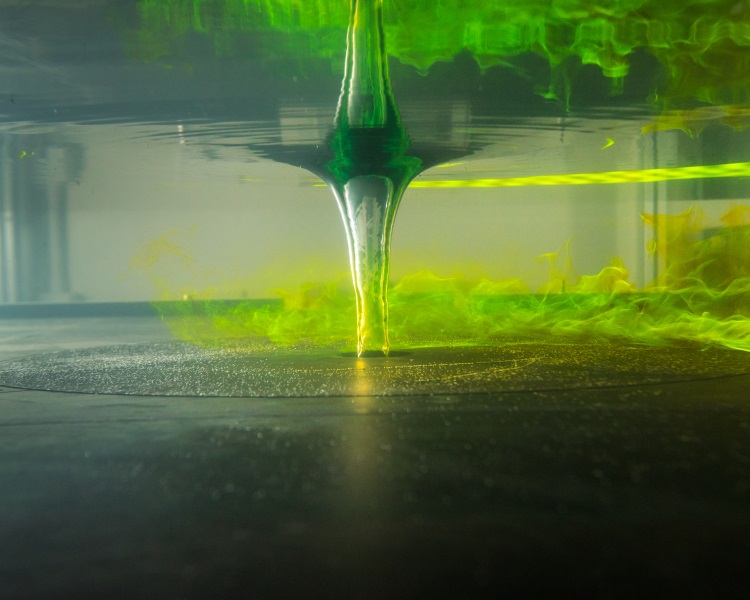
Scientific discussion meeting organised by Dr Maxime Jacquet, Dr Silke Weinfurtner and Dr Friedrich König.
The discussion meeting brought together scientists who reproduce effects of the interplay between general relativity and quantum physics in the laboratory. From the foundational ideas of the research programme to its latest experimental breakthroughs and their philosophical implications, participants discussed the present state of the field and possible routes to the future.
The schedule of talks and speaker biographies are available below. Speaker abstracts are also available below. Recorded audio of the presentations is available below. Meeting papers are available in an issue of Philosophical Transactions of the Royal Society A.
Attending this event
This meeting has taken place.
Enquiries: contact the Scientific Programmes team
Organisers
Schedule
Chair
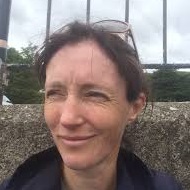
Associate Professor Almut Beige, University of Leeds, UK

Associate Professor Almut Beige, University of Leeds, UK
Almut Beige is the Head of the Theoretical Physics Group in the School of Physics and Astronomy at the University of Leeds, UK, where she moved in 2005 after working at Imperial College London, the University of Cambridge and the Max-Planck-Institute for Quantum Optics in Garching, Germany. Almut is most known for her work on open quantum systems with spontaneous photon emission. While being interested in the foundations of quantum physics, she also helped to establish measurements and dissipation as a tool for the efficient and robust manipulation of quantum information with a wide range of applications. Almut received her PhD from the University of Göttingen, Germany, in 1998.
| 09:00 - 09:30 |
Hawking radiation in optics and beyond
Almost 40 years ago Unruh proposed a fluid-mechanical analogy of Hawking radiation. In the decade thereafter, this work inspired a series of studies in the astrophysical case to understand the phenomenon from a more general point of view, by Jacobson and Visser. At the beginning of this millennium, there were several proposals to take this analogy from the blackboard to the laboratory in several systems, including phonons in Bose-Einstein condensates by Garay et al. and photons in optical fibers by Leonhardt et al. The last decade has seen a rise of experiments related to analogue Hawking radiation, as those by the groups of Rousseaux, Weinfurtner, König, Faccio, Steinhauer, and Leonhardt. There is no doubt that the Hawking effect can indeed be generalised to other fields outside of astrophysics. Now, the experiments may lead the way into the actual treatment of the quantum field theory in the analogue systems. This analogy can be beneficial to both astrophysics and the analogue systems. For example, the use of negative frequencies in optics has already lead to the prediction and measurement of new nonlinear effects, the negative-frequency resonant radiation by Faccio's and the negative-frequency Hawking radiation by Leonhardt's group. This talk discusses the analogy of Hawking radiation and the lessons learnt so far. Then Dr Bermudez will suggest a way forward with emphasis on the optical case, including a discussion on the physical origin of the analogue effect. 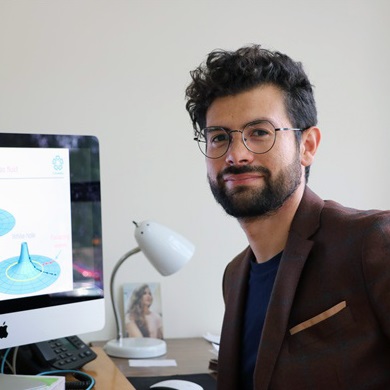
Dr David Bermudez, Cinvestav, Mexico

Dr David Bermudez, Cinvestav, MexicoDavid is an Associate Professor at the Department of Physics of Cinvestav in Mexico City. He has held this position since 2015. Prior to that, he was a postdoctoral researcher at the Weizmann Institute of Science in Israel working with Ulf Leonhardt. His research focuses on analogues of Hawking radiation in the optical and sonic cases, both as theoretical studies and in collaboration with experimental groups. He also studies the dynamics of ultra-short laser pulses inside optical fibres. |
|
|---|---|---|
| 09:30 - 09:45 | Discussion | |
| 09:45 - 10:15 |
Light at the horizon: optical experiments with black holes made of light
In theory, realising Hawking radiation in optical analogues is almost trivial, but in reality it is not. It has taken a series of ideas and practical improvements for being able to measure stimulated Hawking radiation in such an optical analogue [Phys. Rev. Lett. 122, 010404 (2019)]. In this talk, Yuval Rosenberg will present measurements of the stimulated Hawking effect and the progress made to enable them. He will discuss general practical considerations and lessons learnt along the way, translating essential features in the theory of Hawking radiation [Int. J. Mod. Phys. D. 12, 649 (2003)] – an apparent horizon, non-zero surface gravity, and slow evolution – to essential features in the realisation of its optical analogue – in terms of light sources, nonlinear media, and detectors. The crucial role of dispersion and the roles of phase velocity and group velocity horizons will be made clear. It is also remarkable how robust the Hawking effect turns out to be: there is no gravity, no Schwarzschild geometry, no singularity, no weak dispersion, no static metric, no single modes, and yet we see Hawking radiation. Discussing these recent answers and the remaining open questions is hoped to guide us to the next generation of analogue gravity experiments. 
Yuval Rosenberg, Weizmann Institute of Science, Israel

Yuval Rosenberg, Weizmann Institute of Science, IsraelYuval Rosenberg is a PhD student in Ulf Leonhardt’s group at the Weizmann Institute of Science, Israel. He graduated with a BSc in Physics and Mathematics from the Hebrew University of Jerusalem in 2013 and with an MSc in Physics from the Weizmann Institute in 2016. As part of his doctoral research, Yuval aims to shed new light on the physics behind Hawking radiation by experimentally studying a fibre optical analogue of the black-hole event-horizon. Yuval had joined the group’s endeavour to measure the elusive analogue Hawking radiation already in 2014, during his master studies. He specialises in nonlinear fibre optics, and is fascinated by the elegance of physics, pure mathematics and the natural world. |
|
| 10:15 - 10:30 | Discussion | |
| 10:30 - 11:00 | Coffee | |
| 11:00 - 11:30 |
Superconducting circuit analogues of Hawking radiation and the dynamical Casimir and Unruh effects
Professor Blencowe begins by giving an introduction to superconducting microwave circuits and the all-important Josephson tunnel junction element. The latter serves as a low noise, flux tunable inductor, thus enabling the realisation of microwave transmission lines and cavities for which the effective index of refraction can be spatially and/or temporally modulated. He then describes how such circuits can furnish analogues of the dynamical Casimir effect (photon pairs produced from a cavity or semi-infinite transmission line microwave vacuum through an effective moving mirror boundary), and Hawking radiation (emission of photon pairs from an effective propagating event horizon in a microwave transmission line). In the final part, Professor Blencowe describes current work that considers GHz mechanically oscillating (ie accelerating) photodetectors that couple to the microwave cavity modes, and argue that measurable photon production rates from vacuum should result. 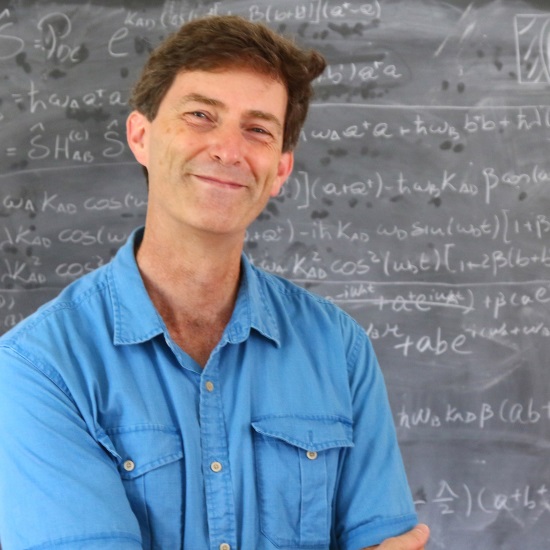
Professor Miles Blencowe, Dartmouth College, USA

Professor Miles Blencowe, Dartmouth College, USAMiles Blencowe received his PhD in quantum gravity at Imperial College in 1989. Following postdoctoral fellowships at Imperial College and the Universities of Cambridge, Chicago, and British Columbia, he joined the faculty of the Department of Physics and Astronomy at Dartmouth College in 1999 where he is currently the Eleanor and A. Kelvin Smith Distinguished Professor in Physics. Miles' research interests range from investigating the quantum dynamics of opto(electro)mechanical systems to establishing possible fundamental limits on the lifetimes of macroscopic quantum superposition states due to gravitational decoherence. |
|
| 11:30 - 11:45 | Discussion | |
| 11:45 - 12:15 |
Optical experiments for analogue gravity
Since the creation of the field of analogue gravity, many different experimental systems have been proposed in which versions of the Hawking effect can be made possible, each with their own advantages. The Photonic Crystal Fiber is a unique medium giving us the opportunity to control the parameters of the interaction with great precision and to perform experiments in carefully chosen regimes. In particular, our understanding of similar processes in optical fibers give a solid starting point from which to investigate the Hawking process. Although much progress has been made in the field, many questions remain unanswered. In particular, spectral correlations of the emitted quanta, a telltale sign of Hawking radiation, as well as the entanglement of the photon pairs have yet to be observed in fibre optical analogues. In this talk, Jack Petty will describe the advantages of the fibre optical system and the challenges which need to be tackled in order to progress towards the next generation of analogue gravity experiments. 
Jack Petty, University of St Andrews, UK

Jack Petty, University of St Andrews, UKJack Petty is a member of the Experimental Quantum Optics Research Group at the University of St Andrews, UK. He graduated with a Masters Degree in Physics from the University of Oxford followed by a Postgraduate Certificate in Education also from the University of Oxford. He is now pursuing a PhD program. His research focuses on nonlinear processes in optical fibres, especially those which can be interpreted as an analogue to extreme astrophysical processes, such as Hawking Radiation, which lie at the interface of Quantum Optics and General Relativity. His work will help to provide the international Analogue Gravity community with experimental results from optical systems. |
|
| 12:15 - 12:30 | Discussion |
Chair

Dr David Bermudez, Cinvestav, Mexico

Dr David Bermudez, Cinvestav, Mexico
David is an Associate Professor at the Department of Physics of Cinvestav in Mexico City. He has held this position since 2015. Prior to that, he was a postdoctoral researcher at the Weizmann Institute of Science in Israel working with Ulf Leonhardt. His research focuses on analogues of Hawking radiation in the optical and sonic cases, both as theoretical studies and in collaboration with experimental groups. He also studies the dynamics of ultra-short laser pulses inside optical fibres.
| 13:30 - 14:00 |
Simulating false vacuum decay in cold atom BECs
Local energy density minima (so called false vacua) are a ubiquitous feature of quantum field theories with complex interaction potentials. Large regions of space trapped in one of these local minima are rendered metastable by quantum effects. The decay is expected to occur via the nucleation and subsequent coalescence of bubbles of new phase, as in a first order phase transition. This process of false vacuum decay has wide-ranging cosmological applications, including describing the origin of our Universe, providing a source of primordial gravitational waves, and determining the ultimate fate of our current Higgs vacuum. The relevant dynamics occur in a regime where we have limited theoretical control, and which is inaccessible via direct experimentation. Dr Braden will show how the key dynamics of relativistic false vacuum decay can be reproduced by an interacting two-component dilute gas cold atom Bose-Einstein condensate (BEC), providing a possible experimental window into some of the most fundamental questions about our cosmos. In the appropriate low energy limit, the evolution of the relative phase is approximately governed by a relativistic wave equation. By periodically modulating the coupling between the two species, a series of true and false vacuum minima can be induced, allowing for the exploration of relativistic false vacuum decay. Dr Braden presents results for false vacuum decay in the analogue cold atom system, using numerical simulations of the Gross-Pitaevskii equation (GPE) describing the condensates. These simulations demonstrate that for a range of parameters the relativistic field description remains valid and the decay proceeds through bubble nucleation. Meanwhile, for other parameter ranges the decay occurs through either spinodal instability or parametric resonance of short wavelength fluctuations. Finally, Dr Braden provides an analytic characterisation of the resonant instability, which may provide a way to experimentally test the validity of the GPE description of the condensates. 
Dr Jonathan Braden, Canadian Institute for Theoretical Astrophysics, Canada

Dr Jonathan Braden, Canadian Institute for Theoretical Astrophysics, CanadaJonathan is a Postdoctoral Fellow at the Canadian Institute for Theoretical Astrophysics and a member of the Simons Modern Inflationary Cosmology collaboration. Previously, he was a postdoc at University College London. He completed his PhD at the University of Toronto. He is broadly interested in early Universe cosmology, and connections between cosmology and cold atom Bose-Einstein condensates (BECs). In particular, he works on the role of highly non-equilibrium and nonlinear processes in both cosmology and BECs using a variety of cutting edge numerical tools. |
|
|---|---|---|
| 14:00 - 14:15 | Discussion | |
| 14:15 - 14:45 |
Trapped atoms and cosmic analogues

Dr Ian B Spielman, JQI: NIST and University of Maryland, USA

Dr Ian B Spielman, JQI: NIST and University of Maryland, USAIan B Spielman is a Fellow of the Joint Quantum Institute (JQI), a joint research institute between the National Institute of Standards and Technology (NIST) and the University of Maryland (UMd). A member of the NIST technical staff since 2006, in 2014 Spielman was appointed as a 'NIST Fellow' (of NIST’s 1,800 member technical staff, just 40 are NIST fellows). Spielman is an experimentalist in atomic, molecular and optical physics but was trained as a condensed matter physicist during his PhD at Caltech from 1998 to 2004. Spielman’s research centres using ultracold-atom systems – just 10s of nano-Kelvin above absolute zero – to realise the many-body phenomena so common in conventional materials. He has pioneered techniques to add artificial magnetic fields and spin-orbit coupling to cold-atom systems opening the door for new many-body systems. Spielman has received many awards on account of this research including the 2015 APS I.I. Rabi Prize in Atomic, Molecular, and Optical Physics. |
|
| 14:45 - 15:00 | Discussion | |
| 15:00 - 15:30 | Tea | |
| 15:30 - 16:00 |
Phonon pair creation by inflating quantum fluctuations in an ion trap
Quantum theory predicts intriguing dynamics during drastic changes of external conditions. An extremal example is a rapid cosmic expansion, tearing apart quantum fluctuations and, thereby, turning them into pairs of 'real' particles. This is accompanied by the generation of quantum entanglement at large distances. Similar mechanisms cause the Sauter-Schwinger effect and Hawking radiation. A closely related process of expanding space-time during cosmic inflation explains the creation of the seeds for structure formation. Even though signatures of this effect can still be observed today in the cosmic microwave background radiation, direct tests remain out of reach. As an alternative, analogue features have been observed in several experimental platforms. However, preserving the fragile quantum dynamics requires fast control of the system on the level of single quanta, as well as close to ideal isolation from the environment. Trapped atomic ions are well suited to study fundamental quantum dynamics as they feature unique fidelities in preparation, control, and detection of quantum states. Professor Schaetz reports results on switching the trapping field of two ions sufficiently fast to tear apart quantum vacuum fluctuations, ie, create pairs of phonons and, thereby, squeeze the ions’ motional state. He discusses this process as an experimental analogue to cosmological particle creation in the early universe, accompanied by the formation of spatial entanglement. This platform might allow studying the causal connections of squeezing, pair creation, and entanglement and might permit to cross-fertilise between concepts in cosmology and applications of quantum information processing. 
Professor Tobias Schaetz, University of Freiburg, Germany

Professor Tobias Schaetz, University of Freiburg, GermanyProfessor Schaetz studied physics at the Technical University of Munich and at the Ecole normale supérieure in Paris, with a diploma thesis on detecting extraterrestrial matter by accelerator mass spectrometry. Disappointed by its destructive detection and having learned that laser cooling permits freeze trapped ions to form crystalline structures in ion traps, he crystallised an ion beam in a miniature-storage ring in his PhD thesis. As Postdoc, Professor Schaetz had the privilege to work with Dave Wineland and Didi Leibfried at NIST/Boulder, to learn to improve the control on electronic and motional degrees of freedom of ions on the quantum level. Subsequently, he got an independent research group at the Max Planck Institute for Quantum Optics in Garching and demonstrated that trapped ions are well suited to provide an experimental quantum simulator. In 2011, the group joined the University of Freiburg, eager to explore in close collaboration with theorists, under which conditions the intriguing effects of quantum mechanics might be experimentally simulated. |
|
| 16:00 - 16:15 | Discussion | |
| 16:15 - 17:00 |
Panel discussion led by Professor Ian Walmsley FRS
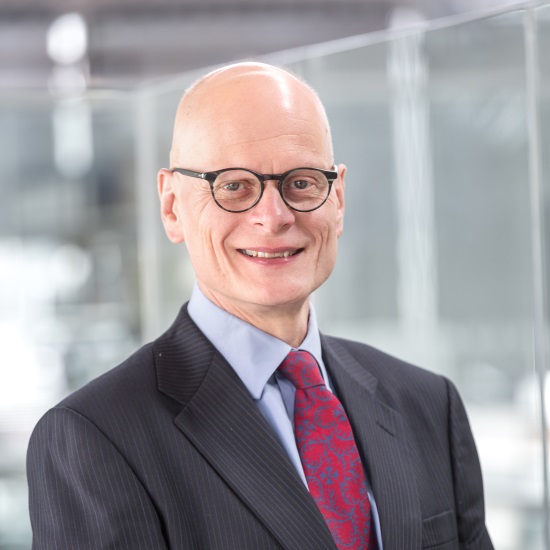
Professor Ian Walmsley FRS, Imperial College London, UK

Professor Ian Walmsley FRS, Imperial College London, UKIan Walmsley is Provost of Imperial College London, UK, and Chair in Experimental Physics. His research in optical science and technology ranges from ultrafast optics to quantum information science. Currently he is the Director of the Networked Quantum Information Technology Hub, the largest collaboration in the UK National Quantum Technologies Programme. He is a Fellow of the Royal Society, the Optical Society (OSA), the American Physical Society and the Institute of Physics. |
Chair
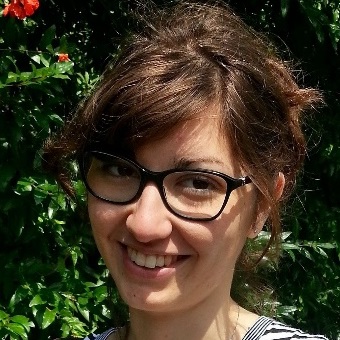
Dr Maria Chiara Braidotti, University of Glasgow, UK

Dr Maria Chiara Braidotti, University of Glasgow, UK
Maria Chiara Braidotti graduated in Physics in 2014 from Sapienza University of Rome, Italy and received a PhD in Physics from the University of L’Aquila, Italy, in 2018 for the study of light in extreme conditions to address open questions in physics, such as time irreversibility and gravitational analogues. Since March 2018 she has been a Research Associate at the School of Physics and Astronomy at the University of Glasgow, UK, where her research activity focuses on the study of fundamental physics through optics and photonics applications and the physics of light in complex systems. In particular, she carries out both theoretical and experimental investigations of quantum and nonlinear optical systems aiming at studying basic concepts of gravitational physics, such as artificial curved space-time geometries and physics at the Planck scale. She has authored and co-authored 15 publications and given numerous talks in international conferences.
| 09:00 - 09:30 |
Spontaneous Hawking radiation and beyond: observing the time evolution of an analogue black hole
We observe the time dependence of the Hawking radiation in an analogue black hole. Soon after the formation of the horizon, there is little or no Hawking radiation. The Hawking radiation then ramps up during approximately one period of oscillation, until it reaches the quantity expected for spontaneous emission. This is similar to a black hole created from gravitational collapse. The spectrum remains approximately constant at the spontaneous level for some time, similar to a stationary black hole. An inner horizon then forms, in analogy with a charged black hole. The inner horizon causes stimulated Hawking radiation. Both types of stimulation predicted by Ted Jacobson and coworkers likely contribute, but the monochromatic stimulation probably contributes more than does the black-hole lasing. 
Professor Jeff Steinhauer, Technion – Israel Institute of Technology, Israel

Professor Jeff Steinhauer, Technion – Israel Institute of Technology, IsraelJeff Steinhauer is an associate professor in the Physics Department at the Technion – Israel Institute of Technology. He studies superfluid aspects of Bose-Einstein condensation. Since 2009, his research has focused exclusively on Hawking radiation in a sonic black hole, resulting in the only observations of spontaneous Hawking radiation to date. He pioneered the combination of mesoscopic physics and ultracold atoms by creating a system for imaging and manipulating the atoms with high optical resolution. This allowed him to make the first observation of the AC Josephson effect in a Bose-Einstein condensate, the first observation of the DC Josephson effect in any system other than superconductors, and the first in situ study of an optical lattice with single-site resolution and tunnelling between sites. During his postdoc at the Weizmann Institute of Science, he performed the textbook measurement of the dispersion relation of a Bose-Einstein condensate. His interest in superfluids began during his graduate work at UCLA and UC Berkeley, where he studied vortex nucleation mechanisms in superfluid 4He. |
|
|---|---|---|
| 09:30 - 09:45 | Discussion | |
| 09:45 - 10:15 |
Quantum fluids of light for simulating rotating black holes
Quantum fluids of light can be created in an optical cavity or in paraxial propagation. In such conditions propagating photons behave like massive particles, because they acquire a small effective mass. Moreover they interact with each other when the medium in which they propagate contains a nonlinear material. In the past few years two such systems, exciton polaritons in a semiconductor microcavity and photons in a hot Rubidium vapour have proved to be interesting platforms for the study of quantum hydrodynamics, including Bose-Einstein condensation, superfluidity, Cerenkov waves, or quantum turbulence. Topological excitations like vortices can be created in a polariton fluid with a defect or injected with engineered orbital angular using a specific laser excitation. Based on these properties, Professor Giacobino will show that these systems are very promising for the study of analogue gravity physics in a fluid of light. As proposed in several theoretical works, cavity polaritons can be considered for the emulation of Hawking physics. A closed 2D event horizon, appearing in the polariton superfluid where the fluid velocity becomes larger than the speed of sound in the fluid can be used to simulate the physics of black holes. Moreover, by injecting orbital angular momentum in the flow, the physics of rotating black holes can be studied, in particular Penrose process such as extracting rotation energy from the black hole or acceleration of excitations passing close to a rotating black hole. 
Professor Elisabeth Giacobino, Laboratoire Kastler Brossel, France

Professor Elisabeth Giacobino, Laboratoire Kastler Brossel, FranceElisabeth Giacobino is one of the pioneers of quantum optics and quantum information, with the first experimental demonstration of two-mode squeezing with an optical parametric oscillator in 1987. She showed the generation of squeezed and correlated light in a semiconductor microcavity. She achieved squeezed and entangled light generation and quantum state storage with cold atomic ensembles, with the first demonstration of a quantum memory for photons carrying orbital angular momentum. Recently she investigated quantum fluid properties of light in semiconductor microcavities, with the first demonstration of superfluidity and of quantum turbulence effects in microcavity polaritons. An important direction now concerns the use of polariton fluids for quantum simulation of systems of various nature, ranging from condensed matter to astrophysics. Elisabeth Giacobino is the author of 230 publications, and she is a member of Academia Leopoldina, a fellow of EPS, EOS and OSA. |
|
| 10:15 - 10:30 | Discussion | |
| 10:30 - 11:00 | Coffee | |
| 11:00 - 11:30 |
Optical superradiant wave amplification in rotating space-times
Superradiance is the amplification of waves scattered by a rapidly rotating object, first introduced by Roger Penrose in 1969 for rotating black holes. This phenomenon is not peculiar of the field of astrophysics: a few years after Penrose's proposal, in 1971, Zel’dovich showed that electromagnetic waves scattered by a metallic rotating cylinder get amplified whenever their angular frequency ω satisfies the condition ω<mΩ, where m is the waves angular frequency and Ω is the cylinder angular velocity. Theoretical predictions of rotating superradiance amplification have been presented for many other physical systems as in hydrodynamics, nonlinear optics and Bose-Einstein condensates. However, the only measurement of superradiance has been recently reported in water waves, in a draining bathtub experiment. In this talk, Professor Faccio elucidates how the process of Penrose-like superradiance can be observed in superfluids of light, and shows how it can be realised in a true optics experiment. Thanks to a novel analysis based on Noether currents, they show that superradiant scattering occurs in a 2D rotating nonlinear superfluid of light. This analysis addresses the full Nonlinear Schrödinger (NLS) equation without making use of the analogy with curved space-time and accounting for quantum pressure, always present in Bose-Einstein condensates and photon fluid analogues. Results of numerical simulations demonstrate the observability of the phenomenon is a nonlinear optics experiment. This work deepens the understanding of the superradiance scattering in superfluids, reporting an experimental proposal to observe superradiated light, and unveils novel phenomena in the field of nonlinear optics. 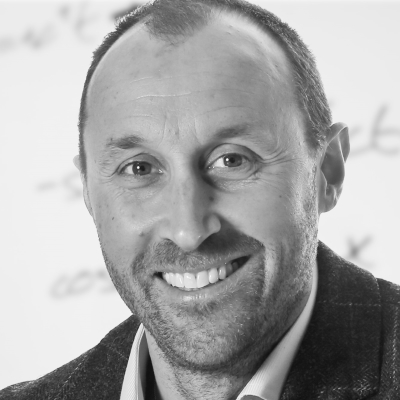
Professor Daniele Faccio, University of Glasgow, UK

Professor Daniele Faccio, University of Glasgow, UKDaniele Faccio is a Royal Academy Chair in Emerging Technologies and Fellow of the Royal Society of Edinburgh. He joined the University of Glasgow in 2017 as Professor in Quantum Technologies and is adjunct professor at the University of Arizona, Tucson, USA. From 2013-2017, he was professor at Heriot-Watt University where he was also deputy director of the Institute of Photonics and Quantum Sciences. He has been visiting scientist at MIT, USA, Marie-Curie fellow at ICFO, Barcelona, Spain and EU-ERC fellow 2012-2017. He was awarded the Philip Leverhulme Prize in Physics in 2015, the Royal Society of Edinburgh Senior Public Engagement medal and the Royal Society Wolfson Merit Award in 2017. He worked in the optical telecommunications industry for four years before obtaining his PhD in Physics in 2007 at the University of Nice-Sophia Antipolis. His research, funded by the UK research council EPSRC, DSTL, The Leverhulme Trust, and the EU Quantum Flagship program, focuses on the physics of light, on how we harness light to answer fundamental questions and on how we harness light to improve society. 
Dr Maria Chiara Braidotti, University of Glasgow, UK

Dr Maria Chiara Braidotti, University of Glasgow, UKMaria Chiara Braidotti graduated in Physics in 2014 from Sapienza University of Rome, Italy and received a PhD in Physics from the University of L’Aquila, Italy, in 2018 for the study of light in extreme conditions to address open questions in physics, such as time irreversibility and gravitational analogues. Since March 2018 she has been a Research Associate at the School of Physics and Astronomy at the University of Glasgow, UK, where her research activity focuses on the study of fundamental physics through optics and photonics applications and the physics of light in complex systems. In particular, she carries out both theoretical and experimental investigations of quantum and nonlinear optical systems aiming at studying basic concepts of gravitational physics, such as artificial curved space-time geometries and physics at the Planck scale. She has authored and co-authored 15 publications and given numerous talks in international conferences. |
|
| 11:30 - 11:45 | Discussion | |
| 11:45 - 12:00 |
Superradiance, geodesics and quasi-normal modes of rotating black holes in vortex flows
While the original analogy between condensed matter systems and curved space-time geometries was originally derived under strict conditions, recent analogue gravity experiments suggest that vortex flows outside the analogue regime and rotating black holes still share similar fundamental effects. In this talk, Theo Torres will focus on light-bending, superradiant scattering and quasi-normal modes emission in the presence of dispersive effects. Using tools originally developed in black hole physics, Theo Torres will characterise theoretically the quasi-normal mode spectrum emitted by a perturbed vortex flow. This is done by extending and reinterpreting the notion of light-rings. An experiment will be presented where the relaxation spectrum of a vortex flow was measured and found to be in agreement with the light-ring prediction. These theoretical and experimental results exhibit a new facet of the fluid-gravity analogy and shine new light on fundamental processes of rotational systems. 
Theo Torres, University of Nottingham, UK

Theo Torres, University of Nottingham, UKTheo Torres is currently a PhD student working with Dr Weinfurtner on hydrodynamic simulation of rotating black holes. Before starting his PhD he was a student at the University Paris VII in Paris, France. Theo Torres' research interests are mainly focused around black holes, modified gravity and quantum gravity. Initially trained as a theoretical physicist, he has however followed the idea of logical positivism by investigating these subjects from an experimental point of view by conducting various experiments to mimic black hole physics in a laboratory environment. |
|
| 12:00 - 12:15 |
Back-reaction in rotating black hole vortex flows
The current focus of analogue gravity research is on the behaviour of classical and quantum fields on fixed background spacetimes. However, in many cases of interest, including the scattering of high-amplitude waves from small compact objects or the extreme case of late-stage Hawking evaporation, the spacetime geometry is altered significantly by interactions with a field. Dr Gooding will discuss a recent analogue rotating black hole experiment in a vortex flow that exhibits back-reaction, and also admits a relatively simple theoretical description. Dr Gooding will then comment on future back-reaction experiments, and the possibility of using analogue systems to provide experimental guidance for quantum gravity. 
Dr Cisco Gooding, University of Nottingham, UK

Dr Cisco Gooding, University of Nottingham, UKCisco Gooding is a Canadian theoretical physicist. He received his Bachelor of Science in Mathematical Physics from Simon Fraser University, and then went on to complete his PhD in Physics at the University of British Columbia, under the supervision of Bill Unruh. His thesis topic was gravitational decoherence. Cisco then spent a year as a postdoc with Bill Unruh researching quantum gravity and analogue gravity experiments, after which he started his current position in the UK as a postdoc with Silke Weinfurtner at the University of Nottingham, where he continues to study quantum gravity and analogue gravity experiments. Cisco's other research interests include quantum information theory, cosmology, optomechanics, and fluid dynamics. |
|
| 12:15 - 12:30 | Discussion |
Chair

Professor Miles Blencowe, Dartmouth College, USA

Professor Miles Blencowe, Dartmouth College, USA
Miles Blencowe received his PhD in quantum gravity at Imperial College in 1989. Following postdoctoral fellowships at Imperial College and the Universities of Cambridge, Chicago, and British Columbia, he joined the faculty of the Department of Physics and Astronomy at Dartmouth College in 1999 where he is currently the Eleanor and A. Kelvin Smith Distinguished Professor in Physics. Miles' research interests range from investigating the quantum dynamics of opto(electro)mechanical systems to establishing possible fundamental limits on the lifetimes of macroscopic quantum superposition states due to gravitational decoherence.
| 13:30 - 14:00 |
Classical hydrodynamics for analogue spacetimes: hydraulic channels and thin films
In this talk, Dr Rousseaux will first review the way to build analogue space-times in fluid mechanics by looking at the flow phase diagram and the corresponding analogue experiments performed during the last 13 years in the associated flow regimes (Nice 2008–2010, Vancouver 2011, Poitiers 2013–2017). Then, they will discuss the effect of non-linearities and capillarity on analogue Hawking radiation in hydraulic channels and their impact on the interpretation of the above experiments with some guidelines for future work. Thin films like the circular jump with different dispersive properties will be discussed in a second part with the presentation of a brand new system for the next generation of analogue gravity experiments in hydrodynamics. 
Dr Germain Rousseaux, CNRS, Institut Pprime, France

Dr Germain Rousseaux, CNRS, Institut Pprime, FranceGermain Rousseaux is a CNRS research scientist with initial training in both Condensed Matter Physics and Fluid Mechanics at INPG, Grenoble Institute of Technology. After completing a PhD on the formation of sand ripples at ESPCI (Paris) under the supervision of José-Eduardo Wesfreid, he studied Nonlinear Physics with Pierre Coullet at Nice University, where he started his work on Analogue Gravity by performing seminal experiments on wave-current interaction in a coastal engineering company. Since 2012, he has worked in Poitiers on interdisciplinary subjects with a fluid mechanics initial impulse like Analogue Gravity, the Ancient Naval Battle of Actium, Tidal Bore Physics, Wave Resistance and the Physics of Ship Wakes with collaborators in Physics, Fluid Mechanics, Mathematics and Human Sciences. |
|
|---|---|---|
| 14:00 - 14:15 | Discussion | |
| 14:15 - 14:45 |
Cosmology in the laboratory
Experiments on analogues of gravity have extended the theory of quantum phenomena in gravitational fields to other areas of physics, confirming them there, but their primary goal is to learn something new for astrophysics. This lecture explains how analogues of gravity may shed light on one of the greatest challenges of theoretical cosmology: the enigma of dark energy. In 1968 Zeldovich published the conjecture that the cosmological constant – now known as dark energy – is a consequence of vacuum fluctuations. While he got the correct structure of Einstein’s cosmological term, he got a vastly incorrect quantitative value. In its modern version, the theory is off by 120 orders of magnitude from the measured value. What is the problem? While all real experiments on forces of the quantum vacuum are explicable by renormalised vacuum fluctuations, gravity was thought to perceive the total, bare vacuum energy. One might regard the measured value of the cosmological constant as the result of an experiment disproving this idea. In fact, as the lecture will explain, the most successful theory of vacuum forces in real materials, Lifshitz theory, may be adapted to account for the correct order of magnitude of the measured cosmological constant [https://doi.org/10.1016/j.aop.2019.167973]. This adaptation is possible due to the analogy between gravitational fields and electromagnetic media, and heavily draws on insights gained in the physics of horizons. 
Professor Ulf Leonhardt, Weizmann Institute of Science, Israel

Professor Ulf Leonhardt, Weizmann Institute of Science, IsraelUlf Leonhardt joined the Weizmann Institute of Science as Professor of Physics in November 2012 after an international career. Ulf Leonhardt was born in Schlema, in former East Germany, on October 9th 1965. He studied physics at Friedrich-Schiller University Jena, at Moscow State University and at Humboldt University Berlin where he received his PhD in 1993. He was a Visiting Scholar at the Oregon Center for Optics in the US, a Habilitation Fellow at the University of Ulm in Germany and a Göran-Gustafson and Feodor-Lynen fellow at the Royal Institute of Technology in Stockholm, Sweden. From 2000 until his appointment at the Weizmann Institute in 2012, he was the Chair in Theoretical Physics at the University of St Andrews, UK. Ulf Leonhardt also had various visiting positions: in 2008 he was a Visiting Professor at the National University of Singapore and in 2011 at the University of Vienna; in 2012/13 he was an adjunct professor at South China Normal University. Ulf Leonhardt is the first from former East Germany to receive the Otto Hahn Award of the Max Planck Society. For his PhD thesis he received the Tiburtius Prize of the Senate of Berlin. In 2006 Scientific American listed him among the top 50 policy, business and research leaders of the world of that year. In 2008 he received a Royal Society Wolfson Research Merit Award and in 2009 a Theo Murphy Blue Skies Award of the Royal Society. In 2012 he received a thousand-talent award of China. He is a Fellow of the Institute of Physics and of the Royal Society of Edinburgh. |
|
| 14:45 - 15:00 | Discussion | |
| 15:00 - 15:30 | Tea | |
| 15:30 - 16:00 |
On the limits of experimental knowledge
To demarcate the limits of experimental knowledge Dr Thébault probes the limits of what might be called an experiment. By appeal to examples of scientific practice from astrophysics and analogue gravity, they demonstrate that the reliability of knowledge regarding certain phenomena gained from an experiment is not circumscribed by the manipulability or accessibility of the target phenomena. Rather, the limits of experimental knowledge are set by the extent to which strategies for what we call ‘inductive triangulation’ are available: that is, the validation of the mode of inductive reasoning involved in the source-target inference via appeal to one or more distinct and independent modes of inductive reasoning. When such strategies are able to partially mitigate reasonable doubt, we can take a theory regarding the phenomena to be well supported by experiment. When such strategies are able to fully mitigate reasonable doubt, we can take a theory regarding the phenomena to be established by experiment. There are good reasons to expect the next generation of analogue experiments to provide genuine knowledge of unmanipulable and inaccessible phenomena such that the relevant theories can be understood as well supported. 
Dr Karim Thébault, University of Bristol, UK

Dr Karim Thébault, University of Bristol, UKKarim Thébault is a Senior Lecturer in the Department of Philosophy at the University of Bristol. His research interests are principally within the philosophy of physics, with an emphasis on classical and quantum theories of gravity, and within the philosophy of science, with an emphasis on scientific methodology. He studied Physics and Philosophy at the University of Oxford and Theoretical Physics at Imperial College London before completing his doctoral studies in Philosophy at the University of Sydney. Before moving to Bristol he was an Assistant Professor at the Munich Center for Mathematical Philosophy. |
|
| 16:00 - 16:15 | Discussion | |
| 16:15 - 17:00 |
Panel discussion led by Professor William G Unruh FRS

Professor William G Unruh FRS, University of British Columbia, Canada and Texas A&M University, USA

Professor William G Unruh FRS, University of British Columbia, Canada and Texas A&M University, USABorn in Winnipeg, and received his PhD from John Wheeler at Princeton University, he has been working on the overlap between gravity and quantum for his career. He has worked on black hole absorption, and radiation, how particles arise in Quantum Field theory, quantum effects in gravitational wave detection, testing quantum gravity in flowing fluid analogues, foundations of quantum mechanics, and many other like topics. |



